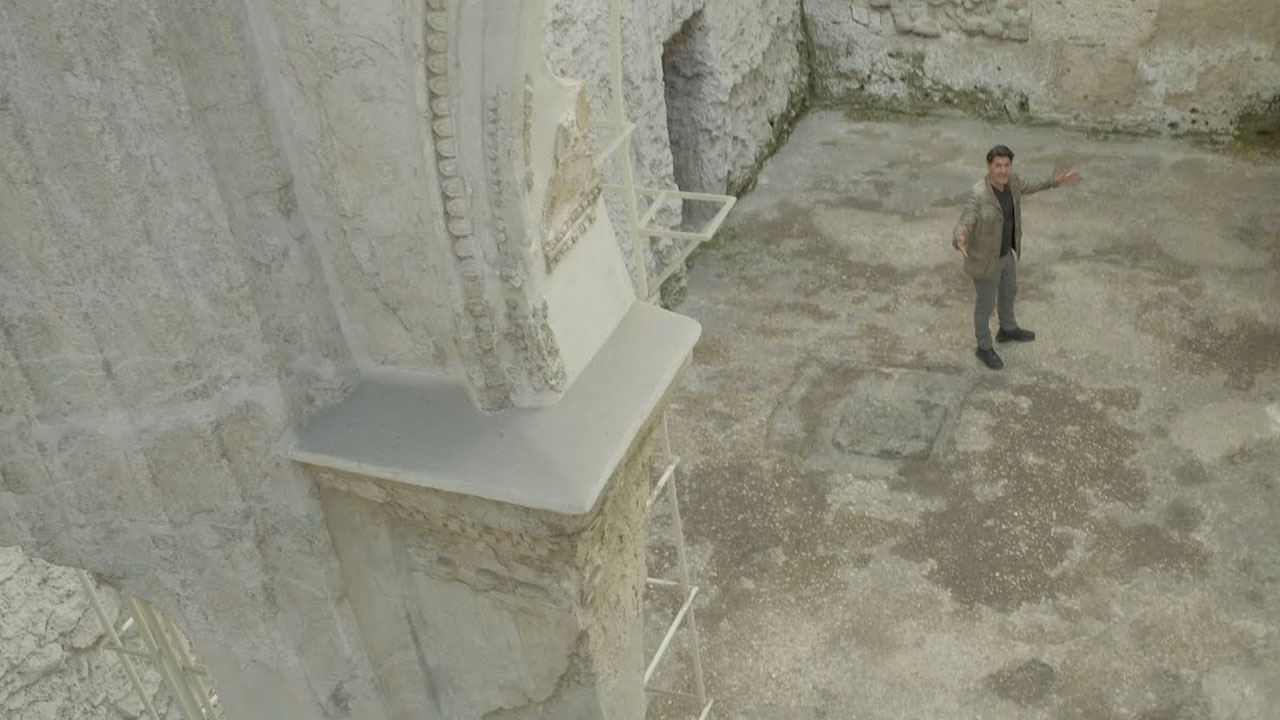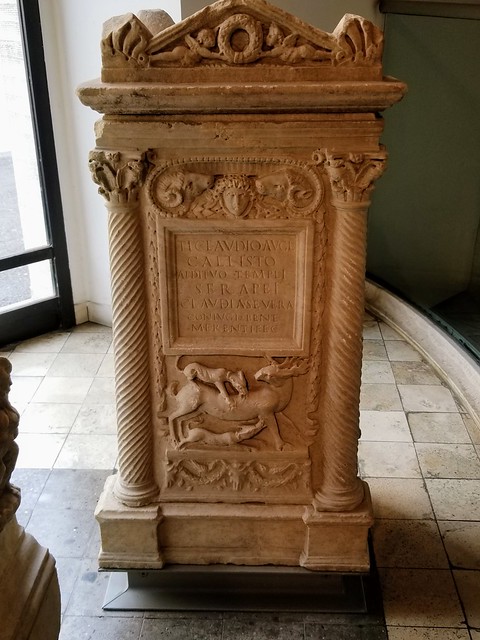Start with our video overview:
Crypta Balbi narrates the elaborate history of medieval Rome, preserved in the collection of rare artifacts and its structures, used continuously for almost a millennium. In fact, there are few aspects of Roman history that have not left their mark on the Crypta Balbi.
The first construction at the complex of Crypta Balbi dates from 13 BCE and was a significant addition to the architectural fabric of early imperial Rome: the third-ever permanent theater to be inaugurated in the city, built by Lucius Cornelius Balbus, Proconsul of Africa. Balbus was granted permission to create this Greek-inspired monument following significant military victories by his ally, Augustus, who had recently dedicated the second temple to his late nephew, Marcellus. Four decades prior, when Pompey sponsored the first permanent theater in the city, he disguised it as a temple ‘to which I have added the steps of a theater’ because this unprecedented project was forbidden.
The theater was flanked by a portico and exedra intended for public recitals, dining, or small-scale theatrical performances. During the reign of Hadrian, this area was converted into a fashionable luxury latrine; by the fifth century, after this fad had declined, the exedra contained glass and metal workshops and the eventual addition of a lime kiln. Lime kilns were essential for burning down the marble that covered and composed antique monuments into the lime used to build the medieval city amongst and above the ruins of the ancient city.
On the other side of the complex, the Porticus Minucia was constructed in the first century CE for distribution of wheat to citizens. To the east, a residential quarter developed with a bakery, a Mithraeum, and a fabric workshop; the remains of these facilities reveal the daily hustle and bustle of an industrious Roman neighborhood. Residences remained in this area until the 1960s when archaeological research identified the historical nature of the complex.
The Crypta Balbi complex is a window to the religious development of Rome. In the mid-second century, three rooms were converted into a long hall to house an early Mithraeum, a place of worship for a Roman mystery cult popular in the army. The cult was banned in 392, and by the fifth century, this structure was filled in. In the ninth century, a Christian church was built within the portico; the exedra later housed a bath house for a nearby monastery. In the sixteenth century, this was transformed into a convent known for educating the daughters of sex workers.
The most recent addition to the Museo Nazionale Romano, Crypta Balbi opened in 2000 as an archaeological site and as a museum of medieval Rome and urban archaeology. Besides finds from the complex itself, such as bone decorations from a rare bishop’s throne, the museum exhibits frescoes from early medieval churches, including the church of St Hadrian installed in the ancient senate house in the forum. The complex of Crypta Balbi was named in catalogs as ‘the crypts’ from as early as the fourth century as at least part of it was already underground; regardless, the passage of time has left behind traces at this site, now excavated and on display in a museum context.
Bibliography
- Claridge, “Rome: An Oxford Archaeological Guide,” (Oxford 2010), 239-50; 487.
- Marconi, “The Oxford Handbook of Greek and Roman Art and Architecture,” (Oxford 2018).
- F.B. Sear, “Roman Theatres: An Architectural Study,” (Oxford, 2006).
- Erasmo, “Roman Tragedy: Theatre to Theatricality,” (Texas, 2010).
- Beacham, “The Roman Theatre and its Audience,” (Harvard, 1996).
- Platner, “A Topographical Dictionary of Ancient Rome,” (Chicago 1929).
This content is brought to you by The American Institute for Roman Culture, a 501(C)3 US Non-Profit Organization.
Please support our mission to aid learning and understanding of ancient Rome through free-to-access content by donating today.
Cite This Page
Cite this page as: Darius Arya, The American Institute for Roman Culture, “Crypta Balbi (Museo Nazionale Romano)” Ancient Rome Live. Last modified 04/07/2021. https://ancientromelive.org/crypta-balbi-museo-nazionale-romano
License
Created by The American Institute of Roman Culture, published on 03/29/2021 under the following license: Creative Commons: Attribution-NonCommercial-ShareAlike. This license lets others remix, tweak, and build upon this content non-commercially, as long as they credit the author and license their new creations under the identical terms. Please note that content linked from this page may have different licensing terms.




